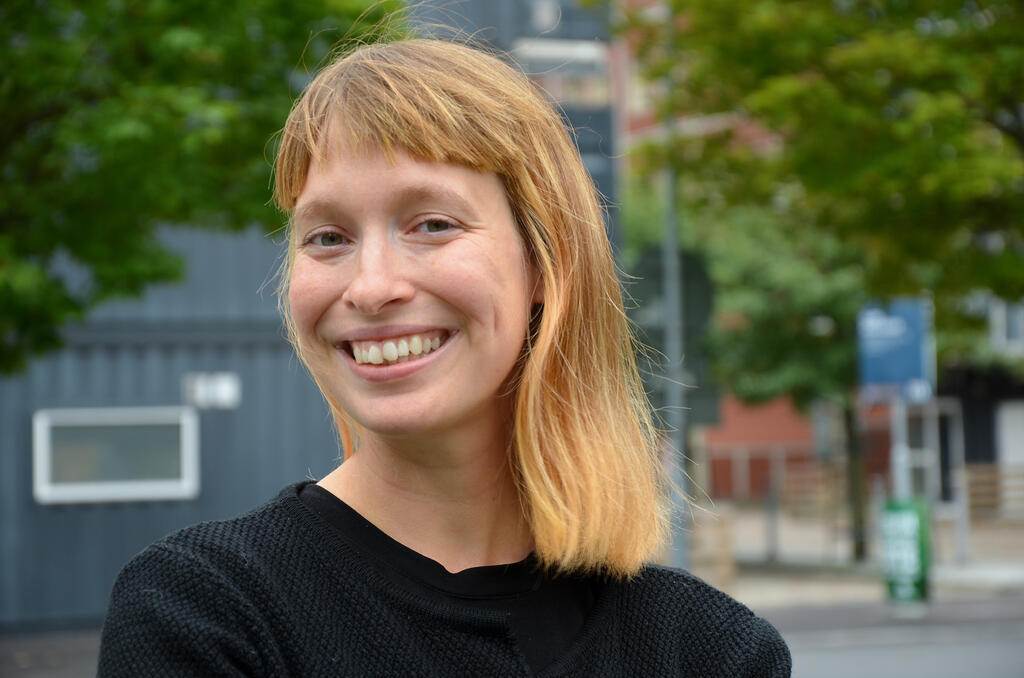Ahead of AVD 2018: Mica Karlsson
Now there is just over a month left until Architecture Visualization Days at Visual Arena, and the program is packed with exciting and inspiring speakers!

One of those taking part as a lecturer is Mica Karlsson, who will hold the session “Live Demo in Photoshop” on Thursday afternoon. Mica worked for several years at Tomorrow in Gothenburg; since 2017 she has been training future visualizers at YRGO.
What will you share with the participants at AVD?
“Over the years, I have specialized in post-production, mainly in Photoshop, and I know that this is something that hasn’t previously been prioritized in educational programs; sometimes it can be moved further down the list as 3D work often takes up the most time.
“I hope to be able to share a few Photoshop tricks, and also a way of thinking. At the beginning of my career, I was driven by finding new functions and creating smart solutions in the program, but today I am perhaps more curious about how as an image creator, I can control the viewer’s gaze. Regardless of what program you use, or how technical you are, getting the right message across is what is most important. Anyone can learn Photoshop using Google, but learning how to create good pictures and how to put time into the right things is something else entirely.
“Our industry is full of creative, capable people, but I know how difficult it can be to create great images when the customer keeps calling, your blood sugar is low, it’s far too late and your computer is just causing problems. Since I began training people, I have been driven by a desire to share the tricks that have helped me over the years. This can concern both purely practical solutions in Photoshop, and also tricks on how to ‘lead’ the viewer’s eye from parts of the image that couldn’t be completed, and instead get them to focus on the parts that matter.”
Architectural visualization is a narrow occupational field that not many people know about. How did you end up here?
“From the beginning, I wanted to be an architect, but in high school I was dissuaded from the occupation by my teachers, which meant that I skipped over the mathematics courses and studied photography instead. My grandfather used to send me pirated versions of Photoshop by mail back when I was in junior high school, and it’s probably thanks to him that I ended up where I am today. In 2010, I began studying Computer Graphics Design at Yrgo, and at that point architecture visualization felt completely right.
“Today, I’m working here at the school, and it feels great to be able to share both my passion for image creation and Photoshop, and all the knowledge I’ve gathered through meetings with colleagues and customers over the years.
It so happens that I still do a number of freelance jobs, and I would never want to stop creating images.”
What’s the best thing about your occupation?
“Telling a story is so exciting! Creating my own world through pictures and talking about something that doesn’t exist, my own reality where I can decide what happens. In addition, I have an enormously strong interest in history, and I like the thought that when people in the future look in the archives to find out how different cities grew, they’ll find my images there.
In my other role as teacher, it’s great to see the light bulb go on over someone’s head, and I hope I can equip my students for working life. That’s something I lacked, myself, when I was studying.”
How do you find inspiration in your work, yourself?
“I find inspiration in everyday life, rather than in fiction. I often think about how I can make use of things happening around me and bring them into my images. When I’m sitting on the bus, I can’t help but look at and be fascinated by people, or be struck by the changes to the light and the landscape.
“But I also try to keep up to date, and spend a lot of time on ArchDaily (www.archdaily.com). Though I rarely look at visualizations when I’m searching for inspiration. Not because I don’t think people do a good job, but because I want reality as a foundation, and not to imitate something that already is a copy. Our industry is already artificial, and it feels better to learn from nature.”
What are you looking forward to the most at AVD?
“The best part will be having the chance to meet and talk with people in the same industry! I usually find myself involved in interesting and exciting conversations. As a speaker, it feels really good to be able to share my thoughts and ideas.”
Mica’s presentation will be at 4:30 p.m. on Thursday

